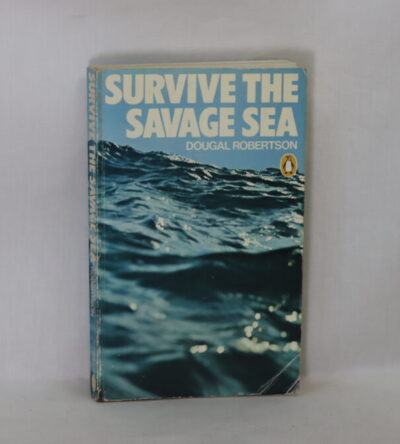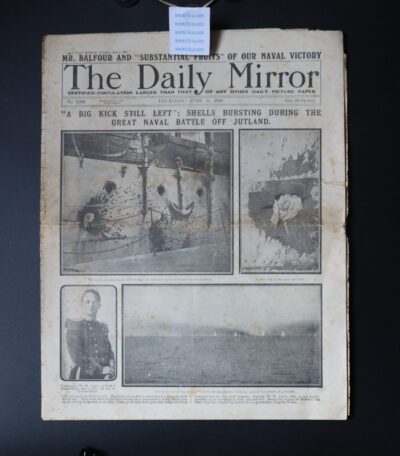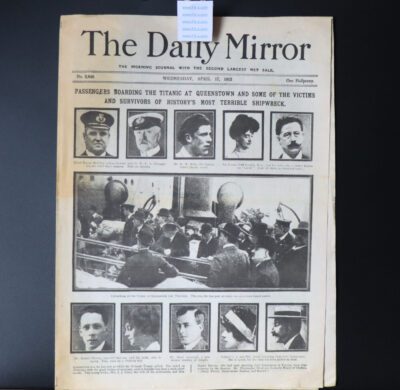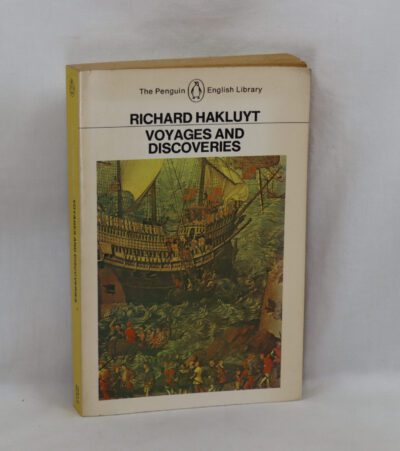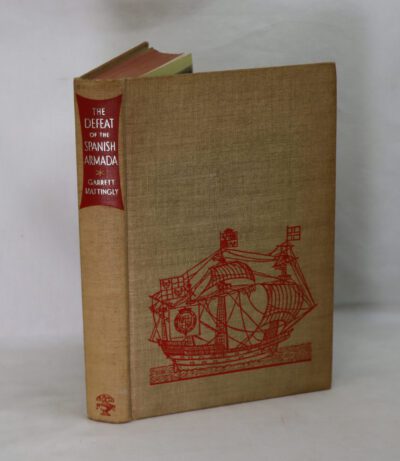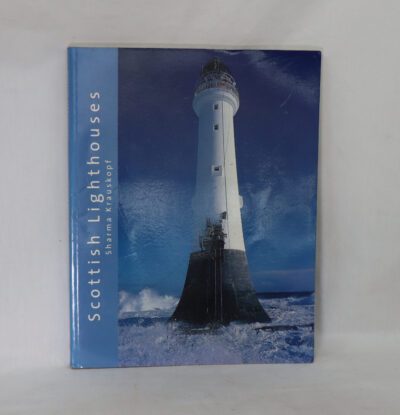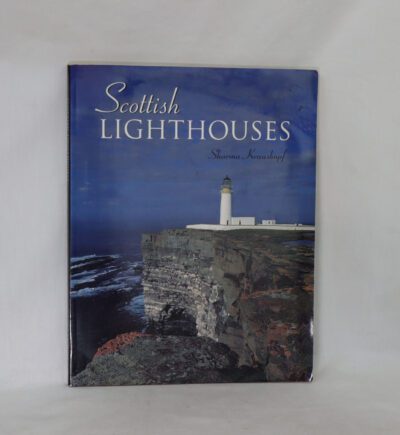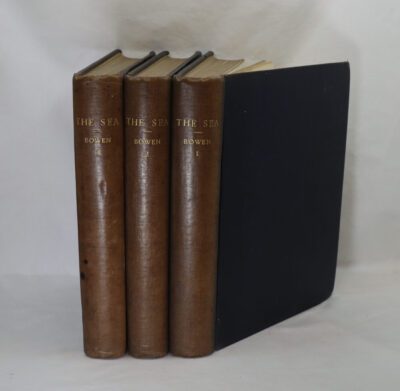German Battleship. Helgoland.
By Aidan Dodson
ISBN: 9781526747600
Printed: 2019
Publisher: Seaforth Publishing. Barnsley
| Dimensions | 26 × 30 × 2 cm |
|---|---|
| Language |
Language: English
Size (cminches): 26 x 30 x 2
Condition: As new (See explanation of ratings)
Item information
Description
In the original dust cover. Navy cloth binding with gilt title on the spine.
- We provide an in-depth photographic presentation of this item to stimulate your feeling and touch. More traditional book descriptions are immediately available.
- Note: These books carry the £5.00 discount to those that subscribe to the F.B.A. mailing list.
Alongside its incomparable archive of British warship plans, the National Maritime Museum at Greenwich also holds a selection of drawings from foreign sources. Among the gems of this collection are a number of German warships dating from the First World War era. These are official plans, acquired by the Naval Inter-Allied Commission of Control as part of the peace treaty, and very similar in style, detail and draughtsmanship to Royal Navy ‘as fitted’ general arrangements, including the use of coloured line and washes. The very best of these, in terms of the completeness of coverage and the visual impact of the drawings, relates to the battleship SMS Helgoland, launched in 1909\. The name-ship of the second class of dreadnoughts designed by the Germans, she was a big advance over the earlier Westfalen class, having 12in guns that matched those of her British opponents. She served in the High Seas Fleet throughout the war, fought at Jutland, and was ceded to Britain as part of the peace terms – which is probably why the plans are at Greenwich – and was broken up in 1924. This book is the latest in a series based entirely on original draughts which depict famous warships in an unprecedented degree of detail. Using the latest scanning technology to make digital copies of the highest quality, it reproduces complete sets in full colour, with many close-ups and enlargements that make every aspect clear and comprehensible. Extensive captions point the reader to important features to be found in the plans, and an introduction covers the background to the design. The result is a novel form of anatomy that will be a revelation to any warship enthusiast.
Review: German Battleship Helgoland is another excellent book for anyone interested in maritime affairs. As with many of the books in this series it opens one’s eyes to much more than is visible on the original plans. It is hard to put down. —The Australian Naval Institute
Model-makers will revel in German Battleship Helgoland’s detailed illustrations, along with warship enthusiasts who might wonder how these behemoths were designed. At first glance, then, this book is published for a specialist niche audience, but the level of detail draws even the layman in, and sometimes books can be simply beautiful and that is enough. —Wargames Illustrated
The book begins with a brief overview of the early German dreadnoughts and their history, including their fate after the armistice (pages 8 to 17). This is pretty standard fare, but I did learn that the Westfalen class was really created as an answer to the British Lord Nelson design (ie, not the Dreadnought) since this was rumoured to feature broadside 10 inch guns- the uniform 11 inch main armament of the Westfalens was, it seems, more or less stumbled upon by accident: the Helgolands were similar except enlarged to take 12 inch (30.5mm) guns.
It is clear that in many ways these German Dreadnoughts were ‘behind the times’ – to an almost alarming extent. There was continued use of reciprocating engines, wing turrets, the inclusion of an obsolete ‘main drain’ drainage system and a really rather primitive fire control set up, with no director system and no observation above the conning tower. However the Germans made the very best of what they did design: the ships had wide beam, wide side compartments, good unpierced bulkheads (except for that main drain) and fire control that was still effective for the limited ranges prevailing in the North Sea, largely because their internal electronics were very efficient.
The drawings here showing the drainage system and fire control are nearly impossible to read, not least because we have to use a key to translate the German terminology and a strong magnifier to read the drainage drawings at all. As throughout this book, the plans are a beige (sepia?) colour with lines in grey and shaded areas in pink or light blue – so not exactly crystal clear! Whilst British Admiralty plans have some of these problems they are easier to read and were originally drawn to twice the scale, so could include more detail. Actually the annotation on these German plans is quite sparse (hardly anything to explain the ‘rig’ drawings, for example), though given the difficulty of reading what is presented perhaps that is just as well! There are a series of drawings showing capstans, deck fittings and equipment, but here we have abbreviations. If you find a ‘KL S’ you can discover that this is a ‘Kleiderschrank’ which is then translated: it is a ‘Wardrobe’. I was particularly interested in the coaling rig drawings since although they are also hard to read these vital arrangements are rarely seen in published ship plans at all.
The best part of the book runs from page 64 to 113, where the ship is ‘broken down’ into short longitudinal and transverse sections, the author then explaining what you can see in each of these limited areas. This really does make the plans more understandable, although the choice of dividing lines between sections can sometimes seem odd – for example, one of these cuts the conning tower in two. Earlier, on pages 34 to 41, there are large double fold out drawings which present longitudinal and upper deck layouts showing all the ‘stations’ (numbered from the stern) on one full length plan. The book ends with further deck plans, working down from the upper decks to the half deck and hold, this time with half a ship length shown on each double page spread- which is good, except that the problems of pastel colouring and limited annotation remain.
Overall, the author has done an excellent job trying to make drawings a German national would find difficult to read understandable to an Anglo Saxon: the problems doing that, as detailed in this review, are no fault of his. With such huge original plans it is impossible to really do them justice in a normal landscape style book of a size that could possibly fit onto a normal book shelf. You can however, with the aid of a magnifier, spend hours pouring over just a few of these pages at a time and learn quite a lot from them, thanks to the author’s diligent efforts to make sense of it all.
Sometimes German battleships are presented as ‘wonder ships’, especially respecting their durability. Actually, as these drawings illustrate, they were really quite straightforward and had many old fashioned and obsolescent features (30 years later that was also to be true of the Bismark), but they were well engineered and the designs did not encourage silly things, like leaving flash doors open when firing the heavy guns.
This is one for real enthusiasts and as usual Seaforth have done an excellent job, creating a book that is beautifully presented and which features the liberal use of original colouring.
About the Author: AIDAN DODSON, after a career in the Ministry of Defence, now teaches at the University of Bristol. He is the author of a number of books on naval history, most recently The Kaiser’s Battlefleet, published by Seaforth in 2016.
Want to know more about this item?

Related products
Share this Page with a friend





